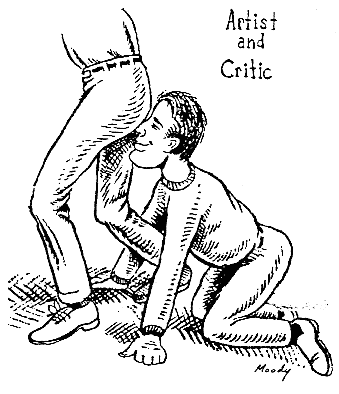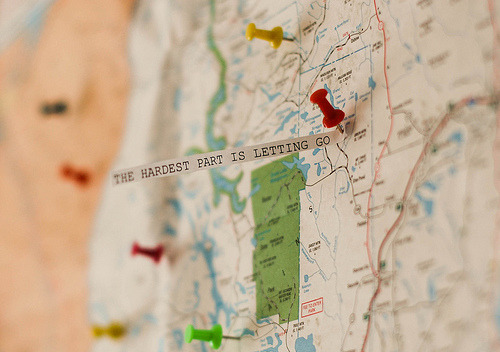
I like to pretend that I write for a living. I mean, it doesn’t pay my bills at all, but when people ask me what I do for a living, I usually tell them about Smile for Camera first. While I by no means pretend to be an expert in music, I do listen to the stuff, and as a listener (and a writer), I publish out opinions and suggestions on music daily (and thank to Smile, have a surprisingly large number of people that actually pay attention to it). Whenever I make a post, I really try to make it so that I am offering something to my readers that will enrich their lives the way it has mine. Either it will make them smile, dance, or laugh, or maybe even lull them off into a sleep, there’s always a deep level of consideration and research with almost every song. I may not always go deep into an artist’s history or motives, but my ultimate goal is always to expose new music, music that may influence a new generation of musicians to create the next big thing.
Yet, it seems like a lot of the stuff that makes its way into my inbox, Soundcloud drop box, and Google reader, to be quite frank, is pure crap. And yet, the hype surrounding the artists that produce this crap is huge, and I cannot seem to figure out why. It’s been a sad evolution for music, I must admit; and lately I find myself more and more often clicking the “mark all items as read” button to avoid the rehash of material that I know is about to take place. It’s always the same artists, the same stories, the same sounds. The entire blogosphere has become a huge circle jerk of self obsession, and mutual masturbation.
Although I admit that I remain safely within the boundaries of musical genres that I really enjoy, I can’t help but noticed that variety and ingenuity have flown out the window as of late. Whatever Happened to Indie? Indie kids used to be untouchable, the next big fad since whatever the last movement before it was and the spanking new nightmare of many a parent. Indie was the culture for the elite, the clubber that got too cool for the uppity joints, the teenager just old enough to dance, young and lusting for hours of endless motion. Indie was all about ingenuity. Indie was not about the flash, the pizzazz, colors so bright they made day-glo jealous.
Fast forward 3 years and now it seems that everywhere you look someone’s acting ‘Indie’. But the term has undergone so much change and evolution that is has become saturated with meanings.
In the Mid 1980s ‘Indie’ was born as the shy, quiet, shiny new baby daughter of 60s garage, 70s punk, and 80s post punk (It was a complicated love triangle, poor Indie doesn’t know for sure who to call ‘daddy). Her Full name was Independent Rock, and as she grew up she became an angsty rebellious pre-pubescent girl. Soon, she was shaving and putting on Teen Spirit every morning before school. She noticed boys. As ‘Indie’ continued to mature, she began to think of her future. And the story becomes fuzzy.
To qualify as an ‘Indie’ band, used to be that one (or one’s band) had strict criteria to meet. One must a) not be signed by a major label, as in, independent. b) flaunt ideas that are cutting edge, untested, new and c) Sport a dirty, and unoriginally unique style that includes, but is not limited to: brides-maids dresses you purchased at a flea market, girl pants on guys, guy pants on girls, suspenders, sunglasses, bright colors, and anything that anyone from Kurt Cobain to Kanye West would wear to make it into the ‘not hot’ edition of US weekly.
The problem is that when ‘indie’ bands got signed they continued to be called ‘Indie’, confusing the heck out of a whole bunch of people. The meaning of ‘Indie’ changed; It was no longer a terms used to describe those that were independent from the man and unsigned; now, ‘Indie’ became more of a description of a sound, a style. Which would’ve fine if it had stopped there.
But, Little ‘Indie’ refused to stop; different and new were good things, but she always wanted to be more. Soon, she found herself leaving the guitar built home of her parents to venture in the land of the electronic. ‘Indie’ still noticed boys, only boys also noticed her, and soon she found herself being thrown around between them. Boys named electro, boys named dance, boys named rap, boys named design, they took her and used and made to love to her as they pleased.
From these trysts we’re given the many meaning of ‘Indie’ now. The problem is, there are now so many of these ‘meanings’, so many interpretations, ideas, and stupid stigmas about what ‘Indie’ is, that it’s become hard to find any value in anything that is produced under the moniker. What Indie was, was something amazing, virginal, pure, untouched and untarnished by the hands of the mainstream. Now you turn on your tele, and Indie is on MTV, in her patent leather high heels, her purple tights and long off the shoulder black dress with a metallic tiger print on the front. Her big, plastic, purple hoop earrings are lost in her disheveled, intentionally messy hair. She stares at the screen in eyes lidded in hot pink shadow and says “love me”.
The influx of what we call Indie has led to a specific and very urgent situation: what was once supposed to be a pool of raw, untouched talent has become a nest of repetitious, recycled sounds. Artists are picked up by blogs so early that their hype swells and deflates long before their record is ever released, and those that survive are constantly pressured with producing more music, much faster than artists have ever had to do in the past. As a result, there is not much that can be called new coming from bands we label “Indie”. It’s almost as if they’ve gotten overwhelmed, lost their confidence, or they don’t know who to be.
While the Indie phenomenon is nothing new when you consider that every generation has a ‘movement’, what is new is how we approach the music. When I first started writing this article, which was over a year ago now, we were making leaps and bounds towards new forms of Electronic Indie music, but what I failed to notice, is that we re also making leaps in bounds in the facilitation of communication.
Armed with this new realization, and with great insight, I find now, the answer to a question I’ve been asking myself for over a year since I started pondering on the subject, “What the hell happened to our music?” In an article called “Indie will Eat Itself” written for pitchfork Nitsuh Abebe writes:
“People who dislike things should say so, and any artist who puts out a record should be prepared for the fact that not everyone will love it. This is just life, and there’s no good alternative to it: Scenes in which every artist is uncritically considered a special, fragile snowflake tend to get really cruddy really quickly. But when you get to the point where you’re wary of any band that seems to think it’s actually doing something cool— even when that act’s only gotten as far as selling a couple of hundred singles— you’re halfway to kneecapping any opportunity for bands to actually be cool. So whenever I hear complaints about new indie acts being predictable, bland, overly tasteful, or unambitious, I can’t help thinking this might be part of the reason: That this scene may have started producing music the way some adolescents get dressed, corrosively self-conscious about any sign of unfashionable difference that opens them up to be mocked. At worst, you can wind up with a whole genre where the acts and the audience are both armoring themselves against standing out or embracing risks. You wind up reaching that weird provincial point where you’re always cutting down the plant that grows higher than the others— where the way you call for the music to be more interesting (or try to express what makes you more interesting) actually has the effect of making it tamer, less interesting.” (Nitsuh Abebe “Why We Fight: Why We Fight #1”)
Holy. Shit.
Abebe’s argument supports a crucial point: we need critics that actually criticize, as opposed to trying to please artists by writing fluff without any insight. Criticism is supposed to help artists grow, which in turn elevates the quality of the music in any scene. Instead we’ve become distracted with the flash of all it and forgotten what music discussion was actually about: discussing music, not artists.

In a genre so saturated with new music releasing daily, we simply cannot allow (or even afford) substandard music to be hyped to national notoriety, less we be content with the eventual death of a big chunk of modern culture. We need press that makes artists think about what they’re actually offering, as opposed to painting every new sensation as a “unicorn-riding medieval fantasy”. This is not porn, and we are not fluffers. Our goal should not be to make all artists look big in the bright lights, but to pick and choose the ones that will proudly represent the state of things under the spotlight. We need to give musicians a chance to change, to evolve, and that means pointing out their shortcomings and errors, not just their outfits and sex partners.
If we were look at our industry as if it were an episode of American Idol (competition episode, not decision night), we all need to be more like Simon Cowell, and less like Paula Abdul. Otherwise, there’s no where to go from here, but downhill.









